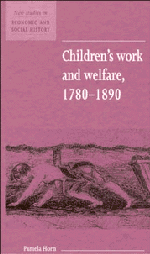4 - Work and welfare: 1868–1880s
Published online by Cambridge University Press: 04 August 2010
Summary
Despite earlier efforts by the religious denominations and other voluntary bodies to provide a network of elementary schools for working-class children, there was at the end of the 1860s a substantial minority of youngsters who were still receiving little or no education (Hurt, 1979). Sometimes, especially in remote rural areas or in the overcrowded slums of the major cities, this was because of a shortage of school places for them. Indeed, there is evidence that an already unsatisfactory situation may even have worsened in some larger towns during the 1850s and 1860s. A comparison of statistics in the 1851 Education Census and the 1869 governmental inquiry into day school provision in Birmingham, Leeds, Liverpool and Manchester indicates the pressures faced in keeping up with population expansion. Although in both Manchester and Birmingham this seems to have been achieved, in Leeds and Liverpool it was not. Thus in Leeds, while population rose by around 50 per cent over the period, pupils on the books of day schools increased by only about 30 per cent; for Liverpool, the corresponding figures were around 30 per cent and almost 20 per cent. Furthermore, the fact that nearly a third of the pupils in Leeds and Liverpool in 1869 were on the rolls of private and other non-inspected schools, which might offer a very poor quality of instruction, underlines the difficulty (Education: Reports, 1870).
- Type
- Chapter
- Information
- Children's Work and Welfare 1780–1890 , pp. 59 - 68Publisher: Cambridge University PressPrint publication year: 1995



